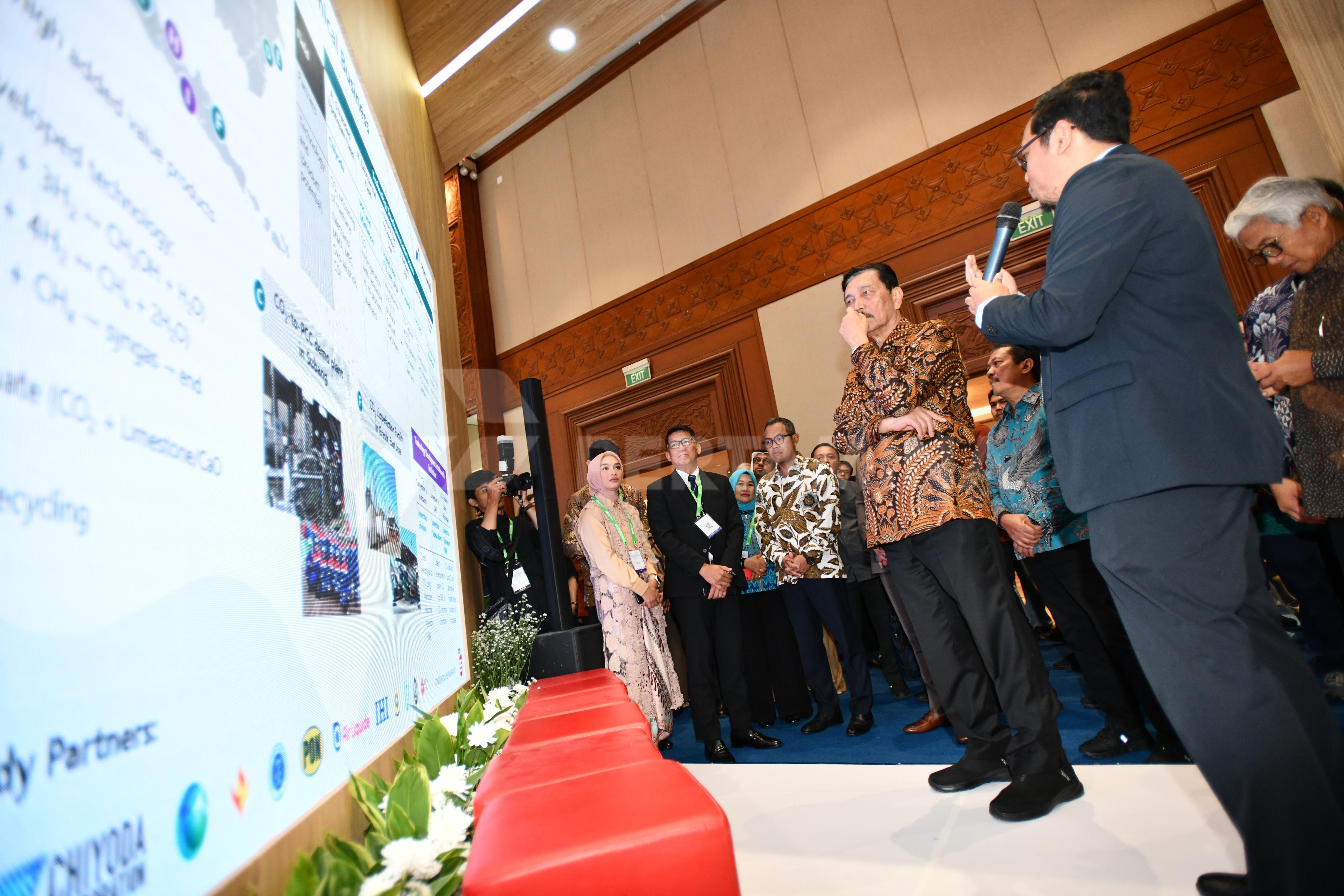 Coordinating Minister for Maritime Affairs and Investment Luhut Binsar Pandjaitan views Pertamina's CCS program during his visit to the Pertamina booth at the "International & Indonesia CCS Forum 2024" at the Jakarta Convention Center, Senayan, on Wednesday, July 31, 2024.
Coordinating Minister for Maritime Affairs and Investment Luhut Binsar Pandjaitan views Pertamina's CCS program during his visit to the Pertamina booth at the "International & Indonesia CCS Forum 2024" at the Jakarta Convention Center, Senayan, on Wednesday, July 31, 2024.
At the IICCS 2024 International Forum, Pertamina Outlines Strategy to Become a Regional Leader in the CCS Business
Jakarta, August 1, 2024 – PT Pertamina (Persero) outlined its strategy to become a regional leader in the Carbon Capture and Storage (CCS) business at the International & Indonesia CCS (IICCS) 2024 Forum at the Jakarta Convention Center, Senayan, on Wednesday, July 31, 2024.
Pertamina's aspiration to develop its Carbon Capture Storage (CCS) business is based on Indonesia's vast CO2 storage potential, with a capacity of over 570 gigatons, primarily in saline aquifer basins. Pertamina has developed a business roadmap for CCS extending to 2060.
Luhut Binsar Pandjaitan, Coordinating Minister for Maritime Affairs and Investment of the Republic of Indonesia, fully supports Pertamina's CCS business development initiative. "Presidential Regulation number 14 of 2024 concerning CCS activities demonstrates our commitment and seriousness in implementing this technology as part of the government's decarbonization initiatives," Luhut said.
Luhut added that the government will support strong regulations and partnerships to ensure the CCS's successful implementation. "We understand that CCS requires support from many parties. Therefore, we are leading efforts to implement CCS in Asia to expedite the necessary derivative regulations," Luhut elaborated.
Luhut also emphasized the promising potential of CCS as a future business, inviting foreign investment to participate in projects in Kalimantan and other regions. "With Indonesia's strategic position and extensive storage capacity, we are confident that this CCS initiative can position Indonesia at the forefront in this field," Luhut stated.
Director of Strategy, Portfolio, and Business Development of Pertamina, A. Salyadi Saputra, mentioned that CCS technology is crucial for reducing emissions amidst Indonesia's challenges as a greenhouse gas emitter.
"Pertamina believes that through CCS technology, Indonesia can achieve its NZE target by 2060 and become a leader in the energy transition in Asia," Salyadi said.
Salyadi added that Pertamina has prepared a CCS development roadmap in three stages. The first stage, to be implemented in 2030, involves building domestic capabilities through technical studies and stakeholder collaboration. The second stage, or the Medium Term (2030-2040), consists of increasing capacity and developing CCS clusters to decarbonize domestic and cross-border operations. The third stage, or the Long Term (2040-2060), envisions Pertamina becoming a mature regional leader in CCS, integrating CCS hubs, and expanding CO2 transportation infrastructure.
"We must balance increasing access to affordable and abundant energy with reducing environmental impacts. It is a challenge we must face together," Salyadi added.
Currently, Salyadi continued, Pertamina is developing 11 CCS projects with a target CO2 storage capacity of 7.3 gigatons and an injection rate of around 7 million tons of CO2 per year by 2030. These projects include collaborations with ExxonMobil in the Asri Basin and the development of CCS hubs in East Kalimantan and Central Sulawesi.
"With support from all parties, Pertamina is ready to take on a strategic role in the journey towards a greener and more sustainable energy future," Salyadi concluded.
Vice President of Corporate Communication of Pertamina, Fadjar Djoko Santoso, added that CCS/CCUS is one of Pertamina's programs for emission reduction, prompting Pertamina to continue developing appropriate technology in the upstream oil and gas industry. "The CCS program is part of Pertamina's business strategy to strengthen the decarbonization of existing businesses. As a sustainable company, Pertamina's active participation in emission reduction contributes to achieving the 2060 net zero emission target," Fadjar explained.
Pertamina, as a leading company in the energy transition, is committed to supporting the Net Zero Emission 2060 target by continuously promoting programs that directly impact the Sustainable Development Goals (SDGs) achievement. All these efforts align with Environmental, Social & Governance (ESG) implementation across all Pertamina's business lines and operations.**